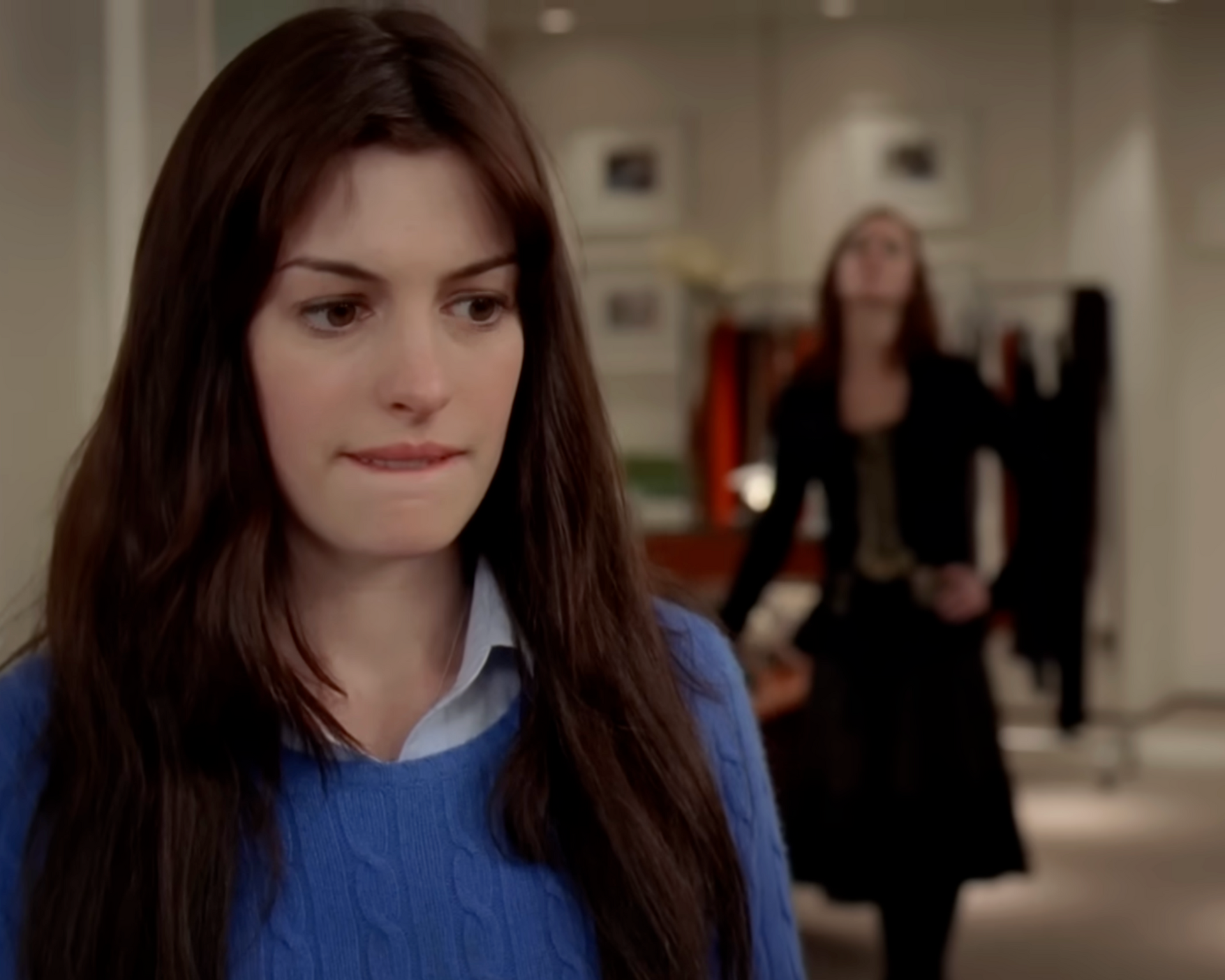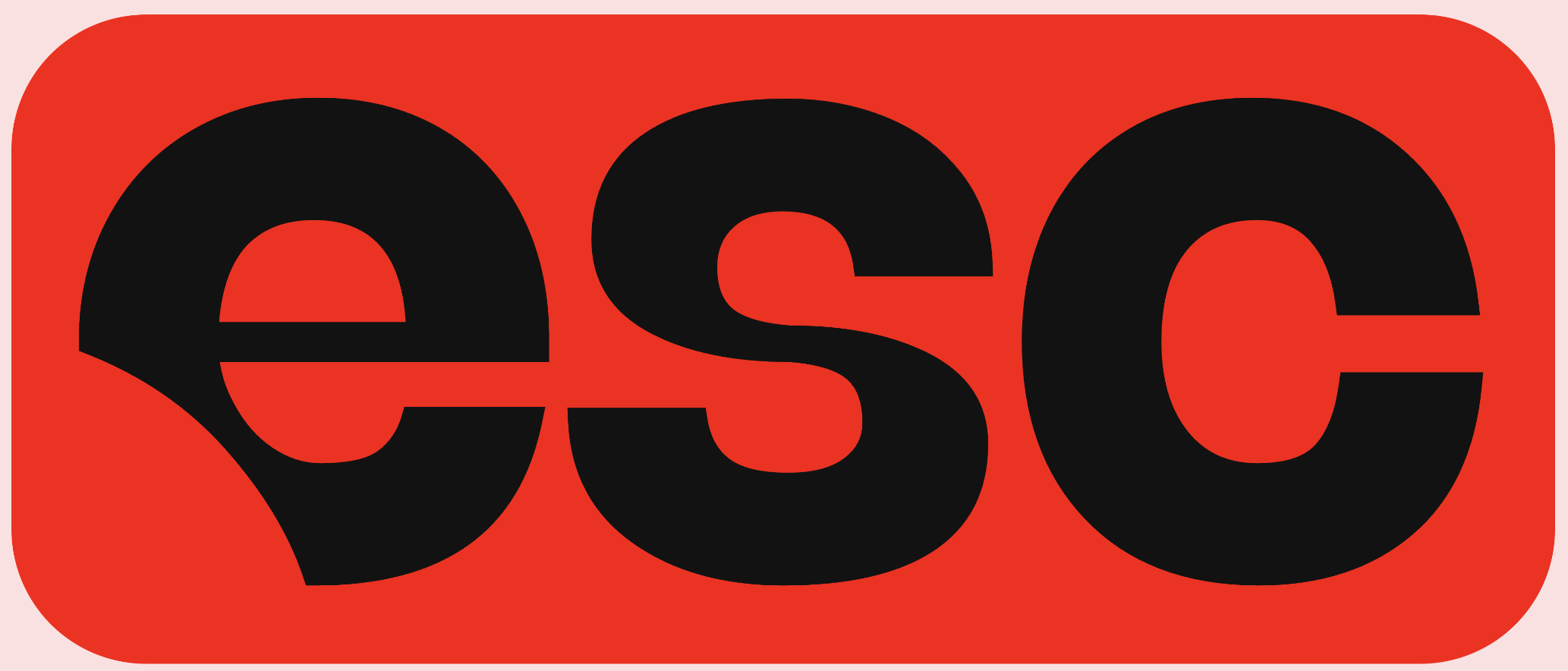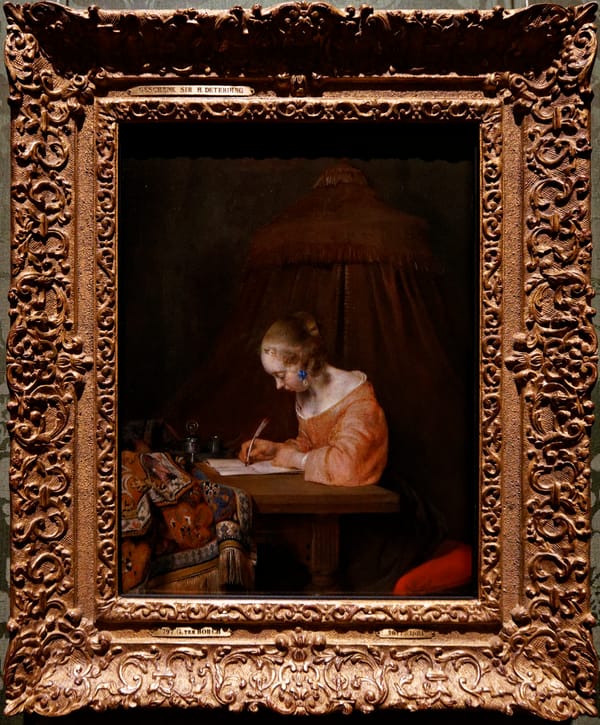We all win when journalists seize the means of production: Fashion media needs a reckoning next
Your TL;DR Briefing on things worth tracking — and talking about over your next power lunch. This time the thing is the pattern of corporate, venture-backed and billionaire-owned media censoring the very voices we need right now. (And some ✨personal news ✨.)

The thing is:
There’s a “Groundhog Day” conversation I keep having this year with fellow journalists, freelance and staff alike, at major lifestyle publications. Higher-ups have less appetite for stories that might be deemed “controversial” — stories that challenge far-right authoritarian narratives, that hold power to account for “cowardcore” retreats from performative DEI and disingenuous environmental targets. One embarrassingly public example of this is Marie Claire UK, which interviewed beauty critic Jessica DeFino for an article about “MAGA beauty,” then dramatically pulled it shortly after publication. (A revised version later reappeared.) More often, the censorship is quieter: pitches that might’ve gotten accepted a few years ago are left unassigned, columns get canceled, facts get censored.
This week brought another casualty. Condé Nast effectively killed Teen Vogue by folding the independent site back into the mother brand from which it was spun off more than two decades ago. Does it matter that a “teen” magazine has reached a familiar fate for digital media? Well, Teen Vogue was more than its name implied. Throughout the 2010s, it emerged as an unlikely venue for left-of-center coverage of politics, social justice and culture, earning a reputation for coverage that appropriately questioned authority and power — an anomaly in lifestyle journalism, which has always skewed advertorial.
As Parker Molloy wrote in her excellent newsletter, The Present Age:
Teen Vogue had become something different. The outlet broke major stories, won awards for its political coverage, and became one of the few publications consistently speaking to young people about reproductive rights, LGBTQ issues, labor organizing, and state-level attacks on civil liberties.
Another publication that was folded into the mother brand is Vogue Business, which framed the news as a “push to expand the Vogue ecosystem,” promising that “the title will remain a distinct editorial property, with its own identity and mission.”
But the numbers tell another story, as 70% of Teen Vogue’s staff were laid off, including the politics team, with Black and/or trans journalists disproportionately affected. (If this sounds familiar, it’s because Condé Nast folded Pitchfork into GQ last year using nearly identical language.)
The union representing Teen Vogue journalists said in a statement the move was “clearly designed to blunt the award-winning magazine’s insightful journalism at a time when it is needed the most.”
Of course, Teen Vogue is merely one story in a pattern repeating itself from CBS News to The Washington Post: corporate media underfunding journalism, hushing the voices we need to hear, censoring facts that are inconvenient to their advertisers, investors or billionaire owners.
The online media model that dominated the early days of my career is as broken now as the legacy media model. Almost every outlet I’ve worked at or contracted for has either folded entirely, been cut to a point of no return, or faced an ideological shift in leadership. A former colleague who reads this newsletter responded to a recent issue, letting me know that a company where I'd once worked as lead editor had just fired its remaining editorial staff. The Washington Post, where I was a contract reporter on its award-winning travel vertical, has seen its internal culture shift significantly from the top down. Vice, where I was an early contributor to its newly launched LGBTQ+ section in 2016 — well, you know what happened to Vice. (I could go on for the rest of this TL;DR Briefing.)
But here’s what I also know: there are audiences who care. Audiences who don’t mind chipping in a few dollars a month to support the media they believe needs to exist. I keep returning to the editorial letter that the 404 Media team published when they launched their worker-owned operation after Vice’s Motherboard faced a similar fate as Teen Vogue.
404’s founding team — Jason Koebler, Samantha Cole, Emanuel Maiberg, Joseph Cox — wrote:
We have watched how new media companies fail, and it’s not because of a lack of audience, revenue, impact, or vital work. New media companies fail because of a growth-at-any-cost mentality, and venture capital investments made at absurd valuations. Most importantly, astronomical overhead costs make it impossible for journalists to out-earn the cost of expensive office space, the ever-changing whims of management, executives’ salaries, the cost of unnecessary enterprise software, and an endless parade of consultants brought in to figure out what’s wrong.
It doesn’t have to be this way, and at 404 Media, it will not. We propose a simple alternative: pay journalists to do journalism.
The landscape is fraught. This isn't an easy business to be in, but those of us who are still here, in some aspect of our work, are motivated by more than money, clearly.
The only way forward for media that has a spine and something to say is independent, worker-owned and fierce about both those facts.
The thing about that is:
We’re losing the voices we need most: the questioning of authority, the willingness to hold power accountable, the job security needed for journalists to confidently report on the truth. What’s left of that work increasingly happens in independent media — 404 Media for tech, The Flytrap for feminist culture (a la Bitch, RIP), Coyote Media bringing the alt-weekly energy back to the Bay Area, and a dozen or so other worker-owned collectives stepping into the space corporate outlets are abandoning.
Which brings me to Saturday, when my co-editor Amy Miles and I soft-launched what we hope achieves a similar thing: anxiety.eco (said, anxiety dot eco), which we’re factually positioning as the only worker-owned outlet covering fashion through the lens of, well, reality on planet Earth. We’ve been building this for months — the timing with Teen Vogue is purely coincidental — but the conditions that killed Teen Vogue are precisely why anxiety.eco exists.
Some context: I’ve been working at the intersection of tech, lifestyle and fashion journalism for nearly a decade and a half. More than four years ago, I moved to London and stepped into the role of head of content at Good On You, the leading platform rating fashion and beauty brands on their environmental and human rights track records — one of the few venues for accountability in the sector, as Good On You’s analysts rate brands independently, only on publicly available information. I’ve been the fractional editorial lead there since 2022. With a small editorial budget and a dedicated team, we grew the journal into a platform for original reporting about ultra fast fashion brands stealing from small designers (as with this piece by Maggie Zhou); data journalism about fashion brands’ climate inaction (the annual COP report we’ve produced with Sophie Benson); and the first-ever Beauty Sustainability Scorecard (with original reporting based on data on more than 200 brands' supply chains), which had several major papers feuding over exclusivity rights to break the story.
anxiety.eco springs from that same team — Miles is Good On You’s fractional managing editor and if I can add, the ideal co-founder. (We both continue working with Good On You to hold fashion and beauty brands accountable.) With anxiety.eco, we’re building what we believe the industry desperately needs: fashion journalism. As I wrote on the site this week: “It’s no secret that fashion media is increasingly advertorial in nature. And it’s well established among fashion journalists who dare do any actual reporting about climate crisis or labour injustice that higher-ups are going to cut the negative references to advertisers.”
It’s also more than “fashion media” as you’ve known it. Our name draws from a tradition of alternative media’s anti-branding — dare I say Vice, Dazed, and so on — but we’re naming ourselves for the prevailing mood of our times: eco-anxiety. It’s tongue in cheek, yes, but paired with an almost-too-earnest tagline that sums up our entire editorial philosophy: “The antidote is collective.”
It’s our gambit to see whether worker-owned fashion media can succeed where corporate media is failing.
Where things get interesting:
Fashion media hasn’t faced a meaningful reckoning for its role in laundering the industry’s reputation. That’s what I wrote last Saturday in the first article published on anxiety.eco. (On Friday, we published this piece by Miles about a brewing crisis in secondhand shopping — a preview of our briefing format.) As I cite in the essay, the University of Westminster’s Communication and Media Research Institute published research on fashion media’s culpability in 2021: “Fashion is among the biggest polluters, yet the media still promote throwaway fast fashion.”
The problem runs deeper than most readers realize. In May, journalist Sophie Benson published an investigation for 1Granary, interviewing fashion journalists about their experiences at major publications. Benson’s own account was damning: “In my own career, I’ve been asked by editors to remove the names of big advertisers from (reported and fact-checked) articles that called them out for lacking climate goals or greenwashing.” The anonymous sources she interviewed told similar stories, with one former editor recounting how editorial policy required swapping out smaller “sustainable” brands for big advertisers. (Benson also interviewed me for the piece; at this point, I am probably too unhinged and too outspoken to be anonymous.)
I’ve been editing reports about fashion’s accountability crisis for years. And when Vox editor Izzie Ramirez was reporting on fast fashion’s human rights violations and environmental impacts in 2023, she interviewed me about why holding brands accountable is so difficult. I had plenty to say. The core problem, I explained, is that brand opacity makes informed consumer choice nearly impossible:
It’s really hard for a consumer who wants to put their values at the center of their spending and vote with their wallets if you don’t know if this brand is profiting off of forced labor and wage exploitation.
But it’s not just about what consumers don’t know, or even voting with our wallets. It’s about what fashion media chooses not to tell them. As I wrote in the anxiety.eco launch essay:
Publishers often say low traffic to sustainability content shows readers don’t care, but what if the real issue is a lack of credibility and imagination? Can you really blame readers for behaving the way you, the fashion media, suggest they should — by buying more trend-led looks than they actually need, when the fast fashion knockoffs are the only versions the average reader can actually afford?
And:
Fashion media must answer for the role it plays in the worsening climate crisis, in waste colonialism, and the over-promotion of new clothes while mountains of textile waste are literally visible from space.
This system isn’t inevitable. As I told Vox: “Fashion didn’t always used to be fast fashion and ultra-fast fashion. That’s not to say it was always perfect, but it’s a lot worse now in a lot of ways. And so we can change the system because it’s not inherent.”
That’s what anxiety.eco is doing: challenging the establishment model with transparent editorial policy (we’re publishing soon with a dare for mainstream fashion press); rejecting trend-led coverage; focusing on secondhand fashion and small independent designers who get ignored in favor of cash-flush advertisers. We’ll cover fashion through the lens of climate reality, waste colonialism and labor justice while acknowledging our role in the system — because anyone who wears clothes is a part of it too (and I suspect that includes you, dear reader).
The thing to talk about over your next power lunch:
The anxiety.eco launch essay opens with a conversation I had at the London Fashion Week kickoff breakfast in September — my friend and I talked for so long we were the last people there. At one point, she observed that if we’ve all heard some version of “vote with your wallet,” then fashion media needs something similar: “vote with your clicks, vote with your attention.”
It’s a simple idea, but it gets at something crucial when independent, worker-owned media is the only place the reporting and criticism we need seems to be happening. As I wrote last Saturday:
We are not deluded enough to think that simply creating better fashion media will solve all of our problems, but working together will get us closer. Supporting the media you want to see more of in the world is the only way forward.
Systemic change requires pressure from every direction: policy, corporate accountability, industry transformation. But it also requires us — workers, readers, people with agency — to build alternatives when existing structures fail.
That’s what worker-owned media represents: not a perfect solution, but a different structure that doesn’t answer to advertisers first. Teen Vogue showed what’s possible when lifestyle media holds power to account. Its death shows what happens when corporate priorities win.
The question now is whether we’ll support the alternatives being built.
Don’t worry, ESC KEY .CO isn’t going anywhere. This site is a longer play — a space for the kind of weird, niche, often unhinged writing about culture, lifestyle and tech that no editor wants to pay me to do but which a lot of you seem to enjoy and value. I’ve heard that ESC KEY .CO features have shaped your strategies, challenged your thinking, even gotten screenshots in decks to clients (thank you for sharing this with me, pals). And at the very least, y’all seem to enjoy Power Lunch, which has a few exciting secret guests coming in the next few weeks.
In meta ESC fashion, I’ll also dedicate some occasional essay space in this publication — which aims to be a kind of alt-weekly for the web — to go behind the scenes of how the anxiety.eco project unfolds. I hope you subscribe if it’s of interest to you. After all, the antidote is collective.
And one long thing to read:
Why fashion media hasn’t faced a meaningful reckoning for laundering the industry’s reputation — and what we’re building instead:







